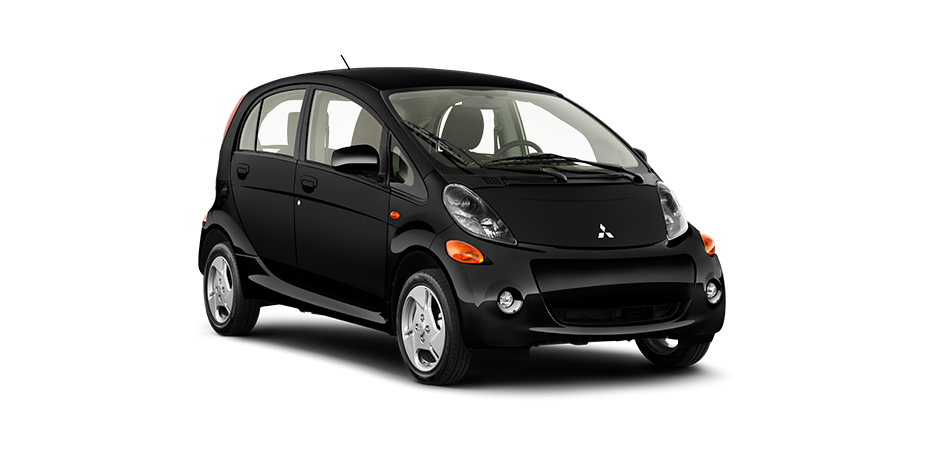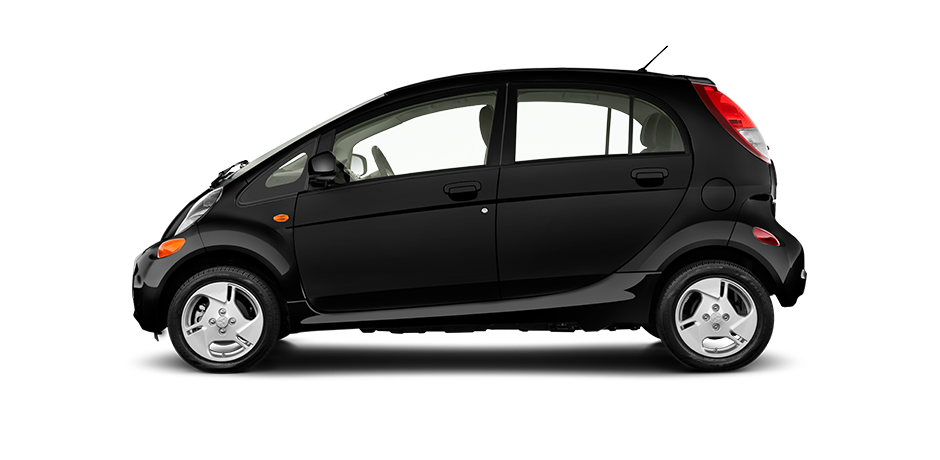 One in an occasional series reviewing consumer vehicles that are powered by water, natural gas, electricity, hybrid motors, high-efficiency gasoline engines or some other alternative source.
One in an occasional series reviewing consumer vehicles that are powered by water, natural gas, electricity, hybrid motors, high-efficiency gasoline engines or some other alternative source.
When last I met readers in a Mitsubishi i-MiEV, it was a 2014 all-electric model that left me with a bout of range anxiety.
After detailing for you the willies I experienced while watching the gauge showing the lithium battery quickly losing juice, I was quickly and very politely contacted by the Japanese automaker, whose North American headquarters is in Cypress.
The American rep apologized, said their mechanics would put the car they loaned me through a rigid inspection to discover if there was anything wrong with it and asked if I would be interested in test driving a new i-MiEV once one was available.
“Absolutely,” I answered.
My chance came earlier this month, when a 2016 i-MiEV was delivered to my driveway.
Right at the top, I am going to tell you I liked the 2016 much more than the 2014. But I also am compelled in the interest of truth to let you know about an embarrassing incident that turned my range anxiety into full blown EIDS (Electric Idolation Deficiency Syndrome). More on that in a bit.
First, let’s get to the indicator half full stuff.
It must’ve been the Labrador Black exterior that had me thinking the ’16 i-MiEV looked sportier than the ’14 blue boy I drove before because Mitsubishi has not really changed the design much between the two. (No 2015’s were available in America.) It’s still a four-door, oval-shaped hatchback with a lot of glass, especially the windshield. But when my daughter parked her black ’15 Prius C One next to it, the i-MiEV resembled the Toyota hybrid’s stubbier little brother.
I can’t speak for those who rode in the back—except a car-seated first grader, who reported he enjoyed plenty of room—but there was a good amount of space in the front seats, even for us wider Yanks. Cargo space is still pretty small; about five full Trader Joe’s paper bags can fit back there, squished in with the receptacle for the trickle charger that plugs into a standard household outlet.
It takes about a day to fully charge via the trickle nozzle that plugs into a port at the back of the car. A flashing turtle on the instrument panel warns the battery is very low. A separate port on the other side of the exterior allows fast charging at a commercial station or a home setup you can purchase separately. Those will get you to about an 80 percent charge in a half hour.
There is one major (and appreciated) change between the two model years. The current version includes an optional navigation system, with a 7-inch touchscreen display and real-time traffic data. The navigation package also includes a rearview camera, a USB port and Bluetooth hands-free phone pairing. Given the camera and the subcompact’s 114.7-inch length, the i-MiEV can be parked just about anywhere.
The ’16 seemed peppier to me than the ’14. Perhaps that has something to do with the Japanese automaker replacing the i-MiEV’s engine and transmission—located under and behind the rear seat—with a 49-kilowatt (66-horsepower) electric motor driving the rear wheels. Power comes from a 16-kilowatt-hour lithium-ion battery pack mounted in the floor and under the rear seat.
Four days into my weeklong test drive period, I was convinced the ’16 (or one from years shortly thereafter) would become my first electric car purchase. Of course, much of that has to do with me being a cheap bastard. The base price is $22,995, and according to the paperwork Mitsubishi left me, the i-MiEV I drove was an even $24k with the navigation system. It’s the least-expensive all-electric sold in America, and with an EPA efficiency rating of 112 MPGe, one of the most energy efficient.
The knock remains the range. Hey, didn’t Elon Musk say he was going to share the technology for a battery with a 200-mile range with other automakers? When, Tesla boy, when?
 Under optimal conditions, you are supposed to be able to ride 62 miles on a full charge in the i-MiEV. But have the heater or air conditioner cranking and it will be less. (To be fair, drive it slow and steady, especially in Eco of brake-generating energy modes, and you may exceed 62 miles.)
Under optimal conditions, you are supposed to be able to ride 62 miles on a full charge in the i-MiEV. But have the heater or air conditioner cranking and it will be less. (To be fair, drive it slow and steady, especially in Eco of brake-generating energy modes, and you may exceed 62 miles.)
Which brings us to The Incident. With my wife and a 6-year-old in tow, I drove the i-Miev with one bar less than half a “tank” of juice on the 405 freeway from Costa Mesa to Laguna Niguel. Once there, we plugged the trickle charger into the outlet at the home of friends, visited for a couple hours and then started the car for the ride home to discover … zero bars.
Yikes indeed.
I had it in my head that City Hall a mile or so away had an electric charging station. I was wrong. So, I got to the interwebs via my cell phone and discovered there was a station at the Costco a couple miles in the other direction. We got there—the gas lines and parking lot were totally packed—and could not find the promised chargers. My wife asked someone at the Costco tire store—and was told the charging station was lost in a recent redesign of the parking lot.
Up Crown Valley Parkway I could see a hospital past The Shops at Mission Viejo mall and remembered that the website had mentioned chargers at a local hospital. But, again, our search came up as empty as our “tank.” (We were at Mission Hospital, the chargers were supposedly at Saddleback Hospital in Laguna Hills.) I turned up Medical Center Road, toward promised chargers at The Shops at Mission Viejo, and watched the car totally die.
On an incline.
In the right lane of traffic.
In total darkness.
(Double yikes.)
Needless to mention, it was a tense couple hours waiting for the tow truck. When we noticed municipal buses making the right turn from Crown Valley were often being passed by cars blindly into our lane, we decided to brave the cold outside the vehicle with its hazard lights flashing.
The coolest tow truck driver ever soon had the i-MiEV on the truck—I would have snapped a picture were it not so dark outside—and then he proceeded to take us the .8 miles to the chargers in the mall lot between Forever 21 and P.F. Chang’s. We had a quick bite while the i-MiEV charged for half hour, and then we were on our way.
For my type of usual driving—rare during weekdays and then only very short trips—what some auto writers have criticized as a glorified golf cart still makes sense, so despite The Incident I will still seriously consider buying an i-MiEV when the time comes. But I have learned two things:
1) Anything beyond usual driving will require much better planning (and an accurate charging station locator app).
B) A certain 6-year-old will be the last member of his generation to buy into electric cars.
Bonus round) Elon?

